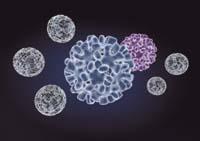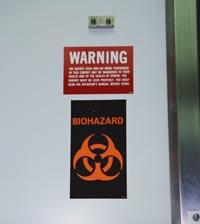Bioterrorism and scientists
2005/04/10 Galarraga Aiestaran, Ana - Elhuyar Zientzia

Microbiologists, however, are very dissatisfied with the consequences that this entails. Since then, money has been used for the research of microorganisms that can be used as weapons, discarding both basic research and that of other microorganisms. Now, researchers have written a letter to show their disagreement with U.S. government policy. 750 researchers have signed this letter.
According to the signatories, the budget of the organization dedicated to the research of microorganisms related to bioterrorism increased by 47% in 2003. He received $1.7 billion in biodefense. On the contrary, the government spent less money on non-bioterrorism investigations.
For example, in the departments of Physiology and Genetics of Microorganisms and Bacteriology and Mycology, 1,117 investigations were subsidized in the period 1996-2000. Then only 746 investigations have been subsidized. That is, subsidised investigations have decreased by a third.

However, research related to bacteria that can be used as weapons has received large grants. These bacteria cause very serious and rare diseases. That is why they are ideal for a terrorist attack. Six are the main bioweapons, the bacteria that produce tularemia, anthrax, pests, murmur, melioidosis and brucellosis, and the subsidized research on them has gone from 33 to 497 since 2000.
This has brought negative consequences, as much less research is now being done on bacteria that cause conventional diseases. They are also examples of bacteria such as E. coli and their research is essential for the development of antibiotics and drugs. But many of these basic studies have also been suspended for lack of money.
However, according to the organization responsible for the research of bacteria potentially used in bioterrorism, this data is not correct, and if it is generally analyzed not to two specific areas of microbiology, the difference is not so significant.
Less narrow inputs and outputs

However, bioterrorism is not the only U.S. concern, but they fear all kinds of terrorism. For this reason, airports and borders have taken extremely harsh measures to control the movement of people. As a result, foreign scientists working or researching in the US have had real difficulties to leave the country and, if they leave, also to enter. Therefore, they have not had the opportunity to attend congresses and meetings and the direct relations between scientists have been very limited.
The conclusion has been clear: research has slowed down. Strict anti-terrorist measures have therefore become an obstacle to progress. In the end, the government has recognized that it has been too demanding and from now on it is easier for scientists and research students to come in and out. It is not believed, however, that they will have the way totally free, as they will have to pass enough controls and questionnaires, but at least they will have the possibility of crossing the borders of the United States somewhat easier than before.
Real risk?
From the European point of view, many are surprised that the United States invests so much money and effort in bioterrorism, since most of the attacks they have suffered so far have been by bomb. But in Europe they are also increasingly concerned about biological weapons. The greatest fear is due to microorganisms that can be spread through food and water supply, as this path would easily reach the entire population and it would be really difficult to fight them.

According to Interpol, the risk of bioterrorism is real and money should not be an excuse not to take all possible measures. After September 11 in the US, panic also spread throughout Europe, and police studied numerous letters and packages with white dust, believing they could be spores of the bacteria that produced anthrax. They found no case, but Interpol believes there is danger. As an example, they mention what they found in a London house in January 2003: they discovered castor, a deadly poison.
This same year, in the first days of March, Interpol held its congress on the prevention of bioterrorism in France, and in the coming months similar congresses will be held on other continents. Therefore, the term bioterrorism will be repeated again and again in the media, and surely security measures will be hardened to avoid a possible risk. Scientists can then rethink, not because they are contrary to police measures, but because they want to continue investigating. And not only about bioterrorism.
Published in 7K.




